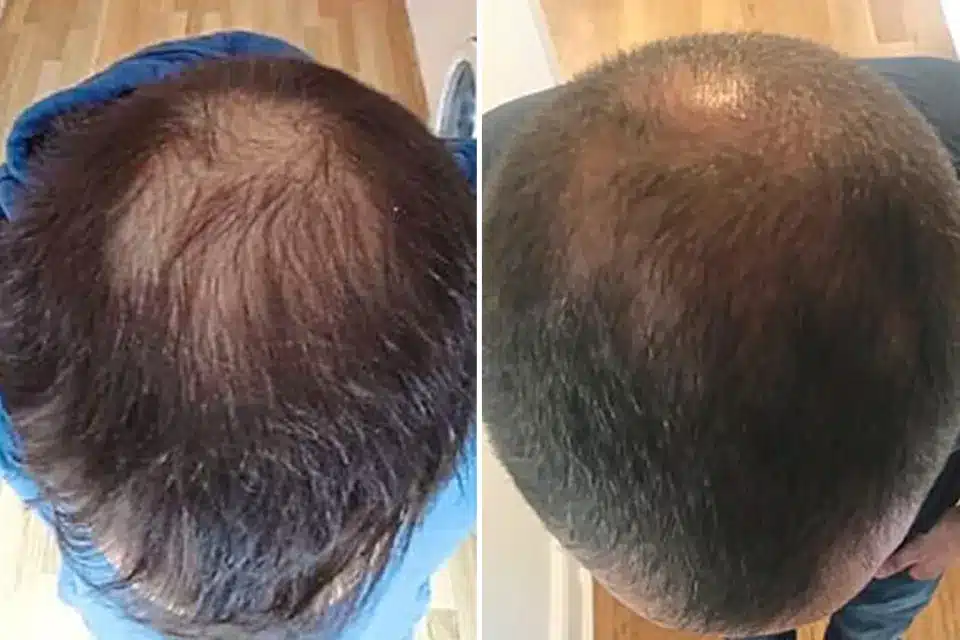Navigating through tummy tuck recovery can feel like uncharted territory for many, yet it’s a journey thousands embark on each year in pursuit of that ideal silhouette. While the anticipation of transformative results is palpable, the path to achieving them isn’t always as straightforward. This guide demystifies the recovery process, offering practical advice and expert insights to smooth your path. From managing expectations to essential care tips, we cover what truly matters for a swift and comfortable healing journey. Dive in to make your tummy tuck recovery not just bearable but empowering.
Understanding the Recovery Timeline
Initial Healing
The immediate post-op phase is crucial. Patients often experience discomfort and need rest.
Doctors recommend taking it easy for at least two weeks. This time allows the body to start healing. Pain management is also key during this period.
Swelling Reduction
Swelling starts to decrease after a few weeks.
By the four to six-week mark, most patients notice a significant reduction in swelling. It’s important to follow all post-operative instructions closely during this time.
Scar Maturation
Scars begin to mature and fade over time.
It can take up to a year or more for scars to fully mature. Patience and proper scar care are essential for optimal healing.
Returning to Activities
Patients can usually return to work within two to three weeks, depending on their job’s physical demands.
However, they should avoid strenuous activities for at least six weeks. Gradually, they can resume more intense exercises and activities as comfort and healing allow.
First Week Post-Op Expectations
Pain Management
After a tummy tuck, pain is common. Patients should expect discomfort, especially in the first few days. Surgeons typically prescribe pain medication to manage this. It’s crucial to follow their guidance closely.
Patients may also experience tightness around the abdomen. This sensation decreases gradually over the week.
Swelling and Bruising
Swelling and bruising are part of the healing process. They peak within the first few days post-surgery but will start to subside after a week. To aid recovery, wearing a compression garment as advised by your plastic surgeon is essential.
Mobility Assistance
Mobility will be limited initially. Patients need help with daily activities, including getting out of bed and walking. This assistance prevents strain on the surgical site and promotes blood circulation, which is vital for healing.
Having someone to support you during this period can make a significant difference in your comfort and recovery speed.
Wound Care
Proper wound care cannot be overstated. Follow your surgeon’s instructions on how to care for your incision sites. This includes keeping them clean and dry and attending all follow-up appointments at the surgery center.
Neglecting wound care can lead to complications, delaying your recovery.
Recovery Milestones in the First Month
Pain Reduction
After the initial post-op week, patients often witness a significant reduction in swelling and pain. This period marks the body’s natural progression towards healing. Pain becomes more manageable, allowing for a decrease in pain medication.
The use of compression garments continues to be crucial. They aid in reducing swelling further and shaping the abdomen. Patients must wear these garments as directed by their surgeon.
Activity Resumption
As healing progresses, patients can gradually resume light activities. Walking is highly encouraged to promote blood circulation and prevent clot formation. However, any form of strenuous exercise or lifting heavy objects remains off-limits.
This phase is vital for mental health as well. Engaging in light activities can boost mood and contribute to overall wellbeing.
Scar Healing
By the end of the first month, patients begin to see the beginning stages of scar healing. Proper wound care and following all post-operative instructions play a key role here. Scars will continue to fade over time but require patience and consistent care.
Post-Op Check-Up
The first post-op check-up is a significant milestone. During this visit, surgeons assess healing progress and make necessary adjustments to recovery plans. It’s an opportunity for patients to address any concerns and receive professional guidance on the next steps.
Progressing Through the Second Month
Swelling Reduction
By the second month, individuals notice a significant decrease in swelling. This marks a crucial phase in the tummy tuck recovery process. The abdomen starts to reveal its new contour more clearly.
Patients often express amazement at this stage. They see their efforts and patience start to pay off. The skin around the treated area begins to adapt and settle into its new position.
Scar Improvement
Scar appearance also improves during this period. With proper care, scars become less noticeable. Many questions about scar management find their answers as people discover what works best for their skin type.
It’s important to follow your surgeon’s advice on scar treatment. This ensures the best possible outcome.
Physical Activity
Increased physical activity becomes feasible. People can engage in more strenuous exercises but should still proceed with caution.
The reliance on compression garments diminishes. Yet, they may still be recommended for certain activities to support the healing abdomen.
Psychological Recovery
Adjusting to body image changes is a significant aspect of recovery. Improved self-esteem is a common win by the end of the second month.
Friends and family often notice not just the physical changes but also the boost in confidence and happiness. This psychological uplift supports overall well-being and aids in recovery.
Essential Recovery Restrictions
Activity Limits
After moving past the initial weeks, as discussed in “Progressing Through the Second Month,” it’s crucial to adhere to certain activity restrictions. Heavy lifting and strenuous exercise should be completely off the table. These activities can strain your healing incision and potentially lead to complications. The entire staff involved in your care will emphasize this point.
Avoiding smoking is another non-negotiable. It hampers blood flow, slowing down the healing process significantly. Patients must understand that recovery is not just about time but also about the quality of actions taken during this period.

Sleep Positioning
Sleep plays a pivotal role in recovery, but how you sleep matters just as much. To avoid tension on the surgical site, adopting specific sleeping positions is advised. Sleeping on your back with your upper body slightly elevated can help. This position minimizes stress on the incision area and supports optimal healing.
Return to Normalcy
A premature return to full activities can jeopardize your recovery and final results. Patience is key here. Your body needs time to heal properly before taking on regular daily tasks or returning to work. The entire staff will guide you through this process, setting realistic timelines for when it’s safe to resume normal activities.
Maintaining a Healthy Recovery Path
Hydration and Nutrition
Proper hydration and nutrition are crucial for a speedy recovery. Drinking plenty of water helps the body heal faster. It also eases the discomfort that comes with recovery. Balanced meals, rich in vitamins and proteins, support the body’s repair mechanisms.
Eating well aids in reducing swelling and prevents complications. Patients should focus on fruits, vegetables, lean meats, and whole grains.
Rest and Exercise
Adequate rest is essential for healing. Patients need to sleep well to give their bodies time to recover. However, too much bed rest can be harmful.
Gentle exercises, as advised by a healthcare provider, promote blood circulation. This can speed up the healing process. Activities like short walks are beneficial but should not strain the body.
Follow-up Care
Regular follow-up appointments are vital. They allow the surgeon to monitor the patient’s progress and catch any signs of complications early.
Patients should always report unusual symptoms to their healthcare provider immediately. This includes excessive pain or unexpected changes in the treatment area.
Importance of Diet and Exercise
Balanced Diet
A balanced diet plays a crucial role in healing after a tummy tuck. Rich in vitamins and proteins, such a diet supports the body’s repair mechanisms. Vitamins, especially vitamin C, aid in collagen formation, essential for wound healing. Proteins are the building blocks of tissue repair and muscle strength.
People need to focus on eating whole foods that nourish the body. This means plenty of fruits, vegetables, lean meats, and whole grains. Avoid processed foods high in sugar and fat. Such dietary vigilance not only accelerates recovery but also enhances overall health.
Gradual Exercise
Reintroducing physical activity post-tummy tuck requires patience and guidance from a doctor. Initially, low-impact exercises like walking are recommended to boost circulation and prevent blood clots. As healing progresses, individuals can gradually include more strenuous activities.
It’s important to listen to one’s body and not rush this process. Overexertion can lead to complications or prolong recovery time. Everyone’s experience is unique, so tailoring exercise routines based on personal progress is key.
Healthy Lifestyle
Maintaining a healthy lifestyle is essential for preserving the results of a tummy tuck long-term. Regular exercise and a balanced diet keep excess weight off and prevent the skin from stretching again.
This lifestyle shift not only preserves the surgical outcomes but also improves quality of life overall. People who adopt these habits often report feeling better in every aspect of their lives – from work performance to personal relationships.
Closing Thoughts
Recovering from a tummy tuck is a journey, not a sprint. Your body needs time to heal and adapt to the changes. By following the outlined steps—starting from the first week post-op to maintaining a healthy path with diet and exercise—you’re setting yourself up for success. Remember, every milestone is progress, no matter how small it may seem. Sticking to the recovery restrictions and being patient with your body’s pace will pay off in the long run.
Now’s the time to embrace this new chapter with confidence. Keep these tips in mind, listen to your body, and don’t hesitate to reach out to your healthcare provider with any concerns. Your dedication and effort during this recovery period are key to enjoying the full benefits of your procedure. Ready for a healthier, happier you? Take that step forward—you’ve got this.
Frequently Asked Questions
How long does the recovery from a tummy tuck take?
Recovery time varies, but most patients can return to normal activities within 6-8 weeks. It’s crucial to follow your surgeon’s guidance for a smooth recovery.
What should I expect in the first week after a tummy tuck?
Expect soreness, swelling, and bruising. Your surgeon will likely recommend rest and limited movement to aid healing.
Are there any major milestones during the first month of recovery?
Yes, significant improvements in swelling and discomfort are typically seen. You may start light activities as advised by your healthcare provider.
What happens in the second month after a tummy tuck?
You’ll likely notice further reduction in swelling and may feel more comfortable resuming most of your routine activities, with caution.
What are essential recovery restrictions following a tummy tuck?
Avoid heavy lifting, strenuous exercise, and smoking. Following these restrictions is vital for preventing complications and ensuring optimal healing.
How important is diet and exercise during recovery?
A balanced diet and gentle exercises, as recommended by your surgeon, are crucial for supporting healing and maintaining results.
Can I maintain my tummy tuck results long-term?
Yes, with a healthy lifestyle including proper diet and regular exercise, you can maintain your tummy tuck results indefinitely.











